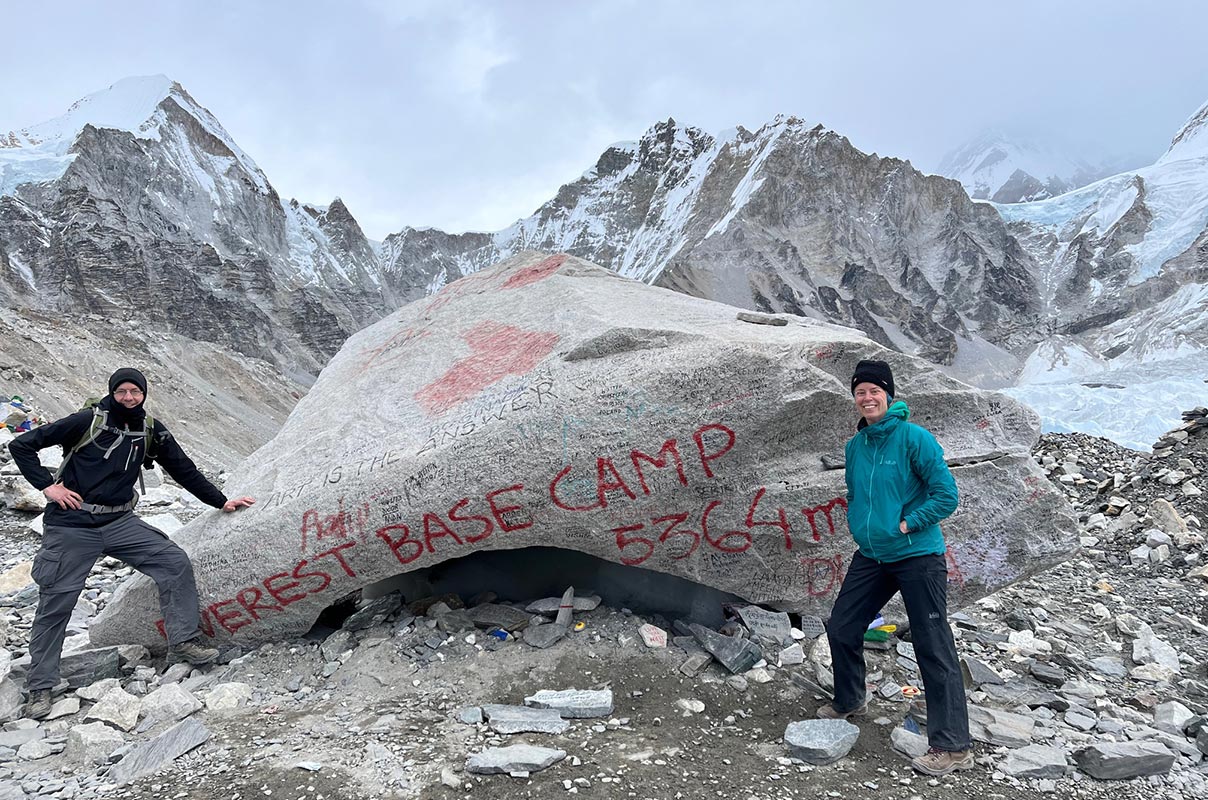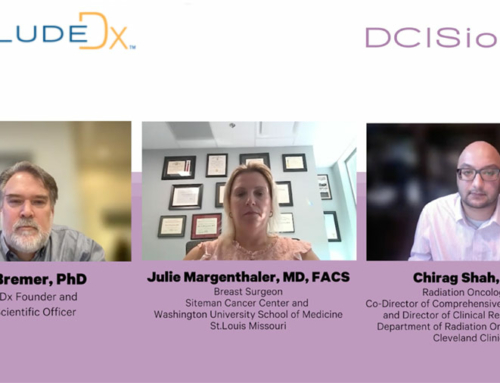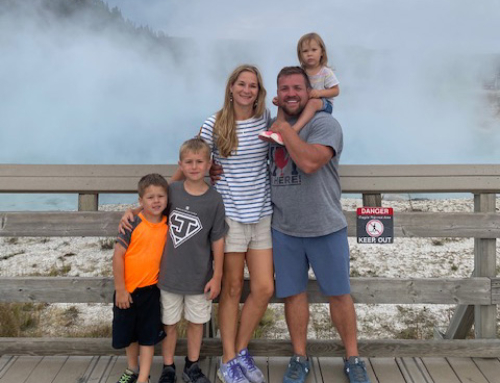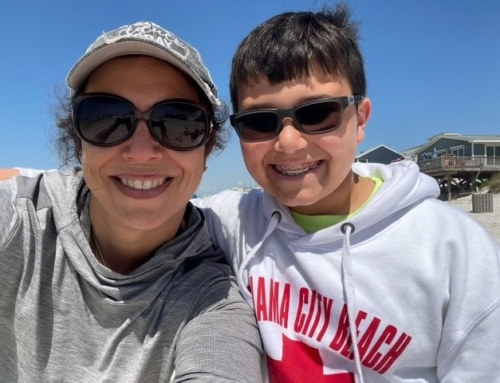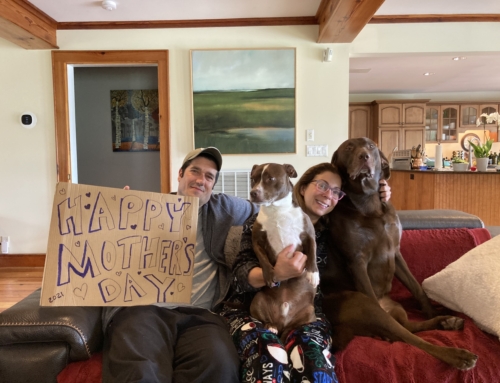“I was an early adopter of DCISionRT and have been recommending it ever since the data was available. I order DCISionRT on every single one of my ductal carcinoma in situ (DCIS) patients. The DCISionRT test can change a lot of the discussions with colleagues and patients, as well as recommended treatments for DCIS.”
Many doctors dream of being a physician or specialist as early as they can remember. Dr. Erica Giblin had her sights set on a different career. “I never thought that I would be a physician. When I was growing up, I wanted to be a racehorse veterinarian. That dream changed in college when I volunteered in a hospital as an orderly. The first day I observed the heart surgeon perform open heart surgery. Following the surgery, I approached him to tell him how impressed I was and how I wanted to do what he did. He burst out laughing and told me ‘impossible since I was a woman’. I went home and told my mom that I was going to medical school. And I did! During my rotations, what I liked most was cancer care – cutting it out and taking it out. So, when I started surgical residency, the whole impetus was breast cancer. I did get sidetracked for a while when I did a cardiothoracic internship and practiced lung cancer surgery for 3 years. What I realized very quickly was that lung cancer did not have the same level of robust research behind it as breast cancer. Therefore, the prognosis for lung cancer patients was not very good and that was very disheartening. So, I decided to do a breast fellowship and after a year, I landed a position in Indiana at the St. Vincent Carmel Hospital Women’s Center. That was 10 years ago. My colleague and I see over 500 breast cancers a year at our practice. We are a one-stop shop with plastic surgeons, medical oncologists, genetics and the whole complement for cancer care.”
DCIS philosophy
“One of the things that I have found and still find true today is the amount of research advancements that go on in breast cancer literally lead the way for other cancers. What we are learning today is that the biology of the disease, whether it is invasive or indolent, trumps everything. The old school thinking was you cut it out, do radiation and anything else to make sure it never comes back. I call that the ‘belt and suspenders approach’.”
DCISionRT looks at the biology of the cancer, which is basically the footprint that tells us what the cancer is going to do in the future. So, that helps us manage it in the present. By using DCISionRT, we can find those patients who need the belt and suspenders approach (e.g. radiation,), but we can also find a subset of patients who may not need radiation or other therapies because their disease process is so indolent. On the flip side, the test also identifies patients who are at super high risk and remain at a high risk even with the belt and suspenders approach. So, it gets at both ends of the spectrum to be able to identify those patients that we should be following closer versus those who we can follow less. Another way to say that is that it is using precision medical metrics and individualizing it to each patient so that it is more precise.”
“I was an early adopter of DCISionRT and have been recommending it ever since the data was available. I order DCISionRT on every single one of my DCIS patients. I think that this test has been the single biggest game changer on how we look at DCIS in probably the last 10 – 20 years.”
Patient Management
“My colleagues are very receptive to DCISionRT. Like all technology, it starts with a grass roots movement, and then extensive clinical data supporting it, and lastly the patients weigh in and speed adoption. Most patients now a days do not want to do more than they must in terms of their cancer treatment. A lot of patients are very resistant to the idea of radiation therapy.”
“Some patients, not all, will go as far as to say they want a mastectomy instead of radiation. They may feel that a mastectomy is the best way to avoid recurrence. Or they may have valid reasons to avoid radiation, such as skin discoloration or changes in texture, and do not want to move forward with radiation unless there is validation that radiation is going to work. Patients want to understand how well the test will work. How much will it benefit them? They want a number! The DCISionRT test looks at them over 10-years and determines their individual percentage risk that the cancer is going to pop back up if we just take out a lump versus if we take out a lump and add radiation. Seeing hard, concrete numbers like that is a game changer. It is amazing.”
“For example, I had a patient diagnosed with DCIS and her DCISionRT results showed that she had a 42% chance of her DCIS recurring without radiation, and it dropped to 10% with radiation. When she saw the numbers, and this was someone who was resistant to radiation, she said, ‘yeah, I’ve got to do it’.”
“The test can also help guide treatment conversations with patients who have residual risk (Residual Risk Subtype (RRt) as defined by DCISionRT) following breast conserving surgery and radiation. The radiation oncologist may recommend a boost or in the event the patient is ER+, we will more strongly encourage her to take that hormone blocking pill. And again, the numbers are concrete and really help us guide those discussions. Also, if the patient remains at high risk and has dense breast, I am most likely going to recommend an MRI once a year. So, the DCISionRT test can change a lot of the discussions with colleagues and patients, as well as recommended treatments.”
Advice for surgeons
My surgeon colleagues should be keeping up on what is new and relevant in terms of technology and assessment tools for breast cancer. A lot of those tools are now at the DNA level. So having a test like DCISionRT helps the surgeon know with better clarity how to manage DCIS in totality. We didn’t have that clarity even 10 years ago.”
Off Hours
Dr. Giblin claims she’s a regular gal. “I’m single with two dogs. I like to hike. I love to eat. I enjoy a good book.” Her most recent adventure was way outside of what most could consider regular! “I just did Mount Everest Base Camp with my brother. It was something that we both wanted to do before we hit 50. The pinnacle was to reach the Base Camp Rock, which I accomplished. The hike was hard, actually harder than I expected. But the payoff was worth it. The scenery was extraordinary, and I was able to check off a big item on my bucket list.”

